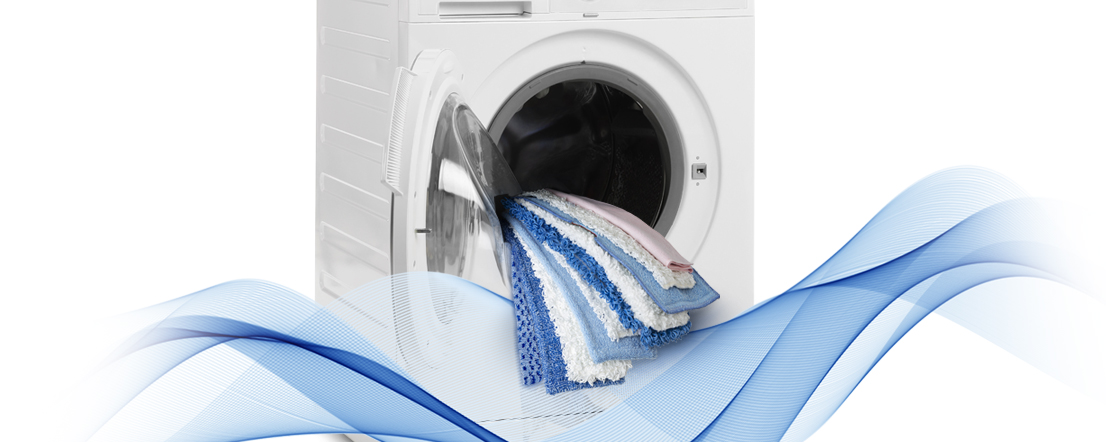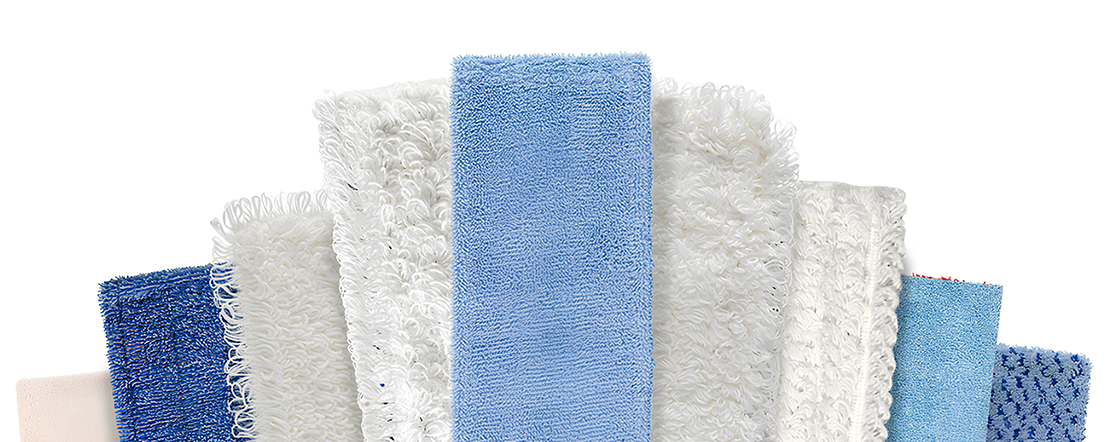DO YOU KNOW HOW TO WASH MICROFIBRE CLOTHS AND MOPS?
In order to maintain the performance of Filmop microfibres over time and to help extend their life cycle as much as possible, it is necessary to pay attention to a few simple guidelines.

The first step is to remove coarse dirt by shaking or vacuuming the textiles so as not to run the risk of damaging fibres and washing machine. This is followed by a pre-wash in cold water without detergent to remove surface dirt and residues of the cleaning product. When finished, it is possible to proceed with the washing using detergent but not fabric softener so as not to risk affecting future cleaning results. In this regard, it is always good to remember to carefully read the instructions on the detergent packaging, focusing in particular on temperature and dosage. Only alkaline detergents with a Ph < 11 should be used, choosing them according to the degree of dirt present and the area in which the cleaning service is carried out.
Another rule to follow is not to overload the washing machine but to allow the textiles to move freely in the drum so as to favour the detachment of dirt. In addition, microfibres should never be washed together with cotton, as cloths and mops made of natural fibres tend to lose residues that would be deposited on the microfibres and affect their performance.

Although the latter are more resistant to washing than cotton textiles, the abrasion of synthetic fabrics during washing tends to cause the fibres to detach. The Eco-Multi handcloth and the Micro-Activa, Twist-Tuft, Rapido Super Extra, Rapido Super, Duo Face Wash Basic, Puli-Brush and Puli-Scrub mops passed with flying colours the test concerning the release of microplastics during machine washing, confirming themselves as environmentally friendly products.